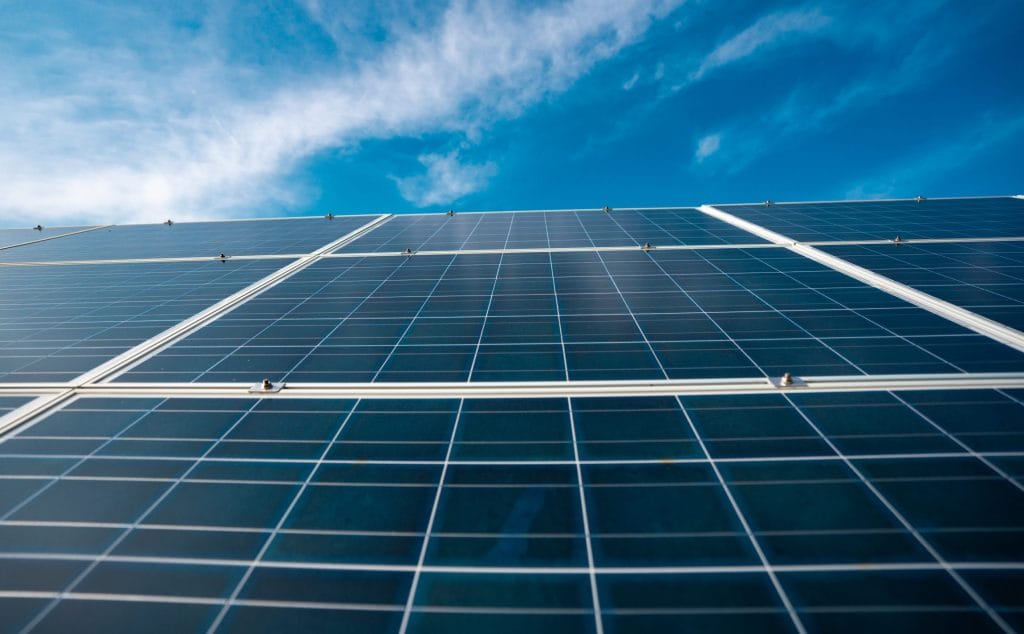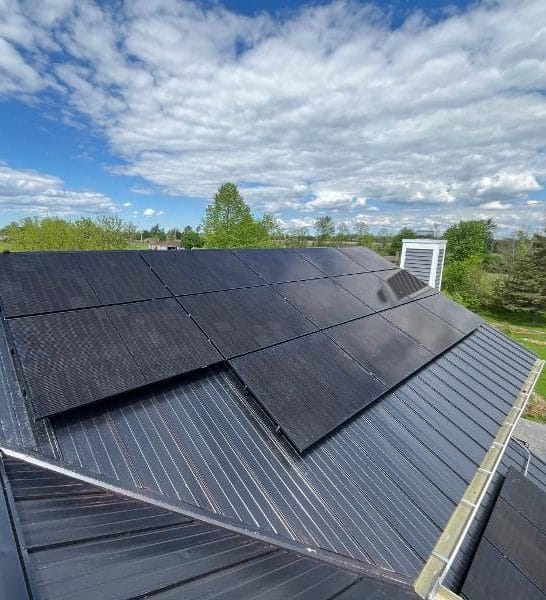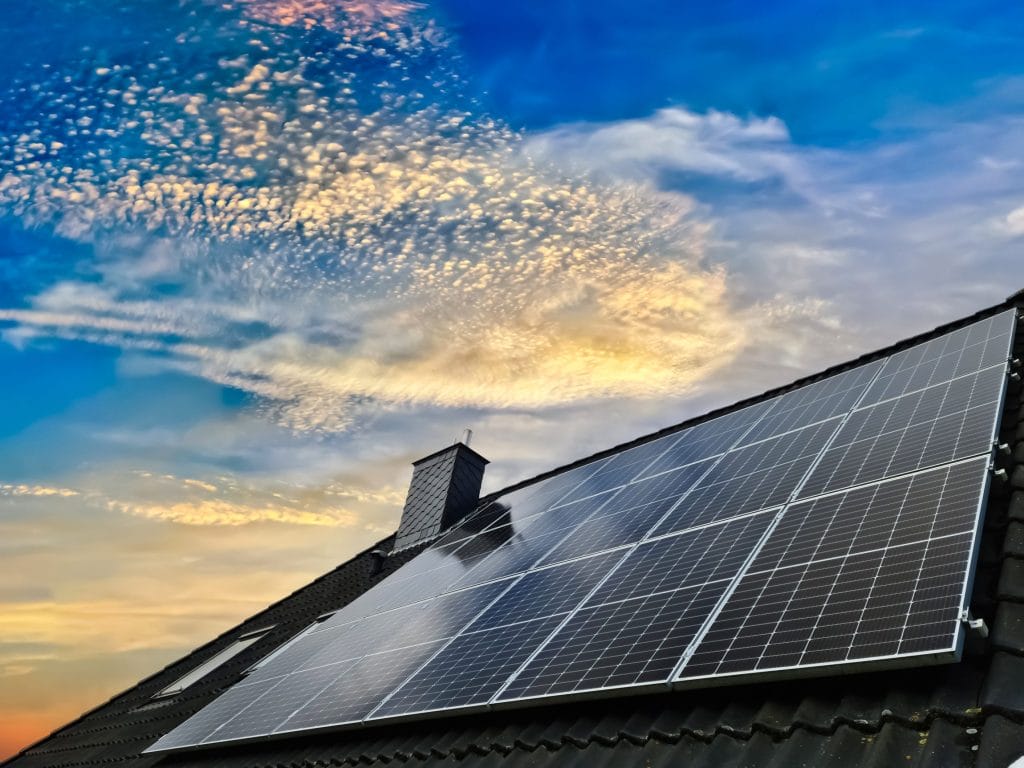Installing solar on a new home is a fantastic decision for sustainability and to secure long-term savings right from the start. While there is a lot of information available online for installing solar on existing homes, there is less written about what to know about solar for new homes. There are many benefits to designing your new home with solar in mind and installing solar as part of your new home build process.
Plan For Solar Early
What to know about solar for new homes? Adding solar to your new home build plans is the first step you can take during your home’s design phase. This allows for integrated installation. When building a new home, you will plan the orientation of your home, where chimneys and vents are located, where shading obstructions like tall trees will be relative to your solar installation. These are all good things to think about.
Ideally, a south facing roof works best for solar and east and west facing roofs work well too, with as few obstructions as possible.
Here are detailed suggestions for designing your new home to be solar ready:
- Position your home with solar in mind: A south-facing roof is ideal for solar panels to capture the most sun.
- Roof angle: A roof pitched between 30 and 45 degrees is ideal for solar in Ohio.
- Roof truss: spacing of 4 feet or less.
- Roof Material: We can mount panels on most roofs except slate and clay shingle.
- Conduit run: of 250 feet or less for solar electric lines.
- Built-in metal conduit: from the attic to a location near the electrical service panel— typically 1-inch conduit.
- Large service disconnect as a point of connection for solar.
- Minimize roof obstructions: Keep solar panels in mind when designing where to put vents and other roof attachments, like dormers and chimneys.
- Load Bearing of the roof: Make sure that your roof will be able to bear the additional weight of a solar energy system.
- Consider landscaping: For solar to work well, sunlight needs direct access to your roof.
- Don’t install a utility meterbase disconnect.
Determine Your Energy Needs
Residential solar energy systems are designed to produce the equivalent amount of energy that the home typically uses.
Because your home is new, you will have to make some estimations to calculate how much energy your home will use every year. Factors included in this estimate include house size, number of people in the home, and appliances.
Work with a solar consultant who has tools to help you dial in the estimates for your home’s annual energy use.
Select a Trusted Solar Partner
In addition to working with you to determine your necessary solar energy system size, a good solar partner will also work with you to select the best equipment for your home. Because solar is a long-term investment, choosing quality, tier 1 solar equipment suppliers is in your best interest.
These equipment suppliers typically have high-quality products and, due to their longevity in the solar industry – and will still be in business 20 years down the road when and if a part needs to be warrantied.
Find a checklist for choosing a trusted solar installer on the last page of our “Guide To Going Solar” which you can download here.
Financial Incentives and Cost Considerations
The primary incentive for installing solar at your home, the Federal Investment Tax Credit, will remain at 30% until 2032. There have been big rushes in the past as the tax credit was on a step-down schedule. That won’t be the case again for a few years.
Your solar installation partner will use your solar system size, current utility provider rates and will build a payback model to help you understand what the payback period for the solar installation will be.
Planning how you will pay for the solar addition to your new home build project is also critical.
If you’re not planning to pay in cash, you could roll the solar project into an existing loan or use one of the lenders your solar installation partners with.
Solar for New Homes: New Homes Should All be Solar Powered
Installing solar panels on your new home is a proactive step toward sustainability and financial independence.
By carefully planning and integrating solar during the construction phase, you’re not just investing in energy; you’re investing in a brighter, cleaner future for your family and your home.
Remember, each decision made during this process contributes to the efficiency and effectiveness of your solar system.
We hope these tips have been helpful. When you have an idea of the major appliances in your home, your heating and cooling plans, and a mockup of your roof that includes vents and chimneys, reach out and we’ll start designing a solar array for your new home.
We look forward to working with you!










